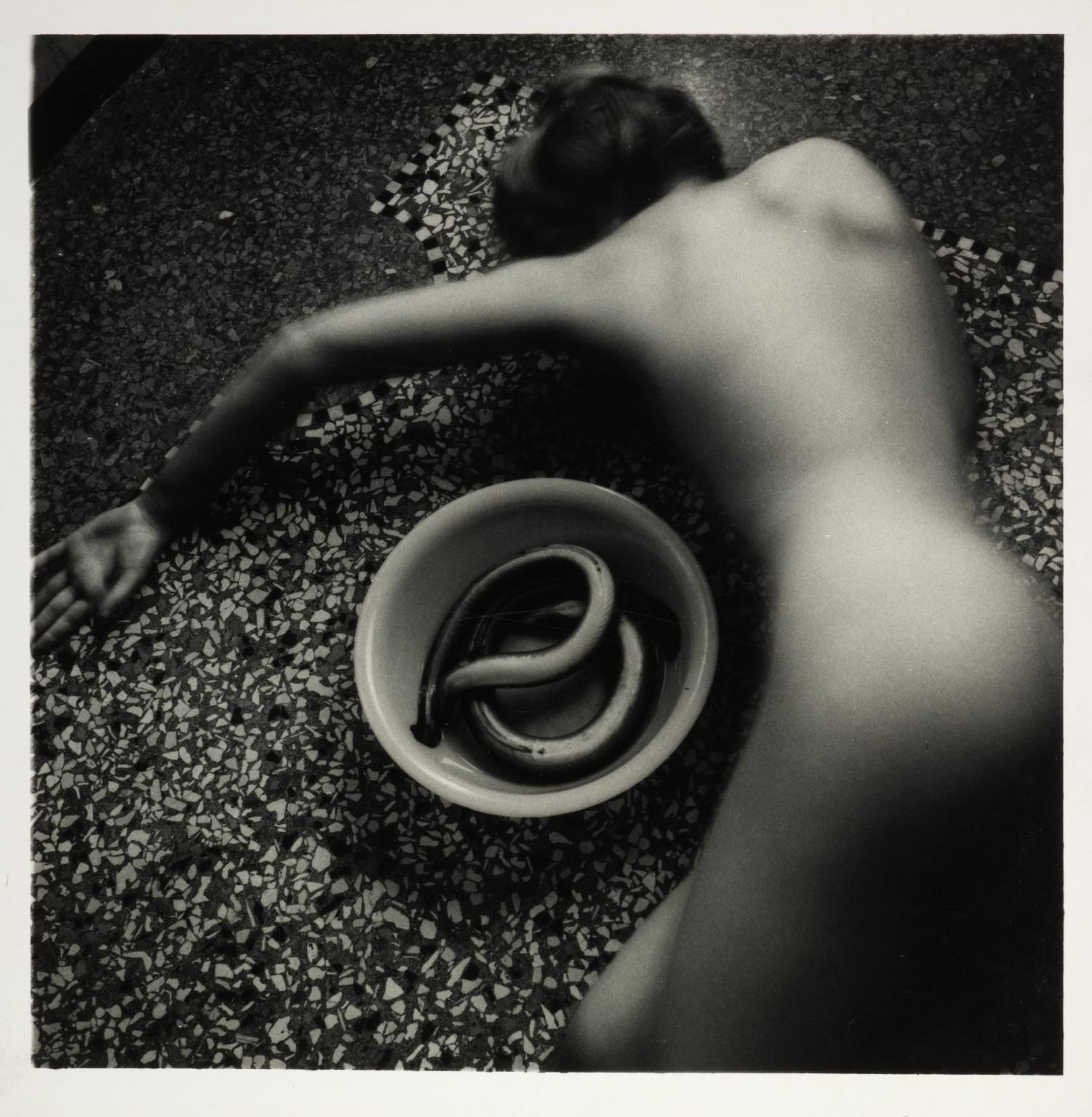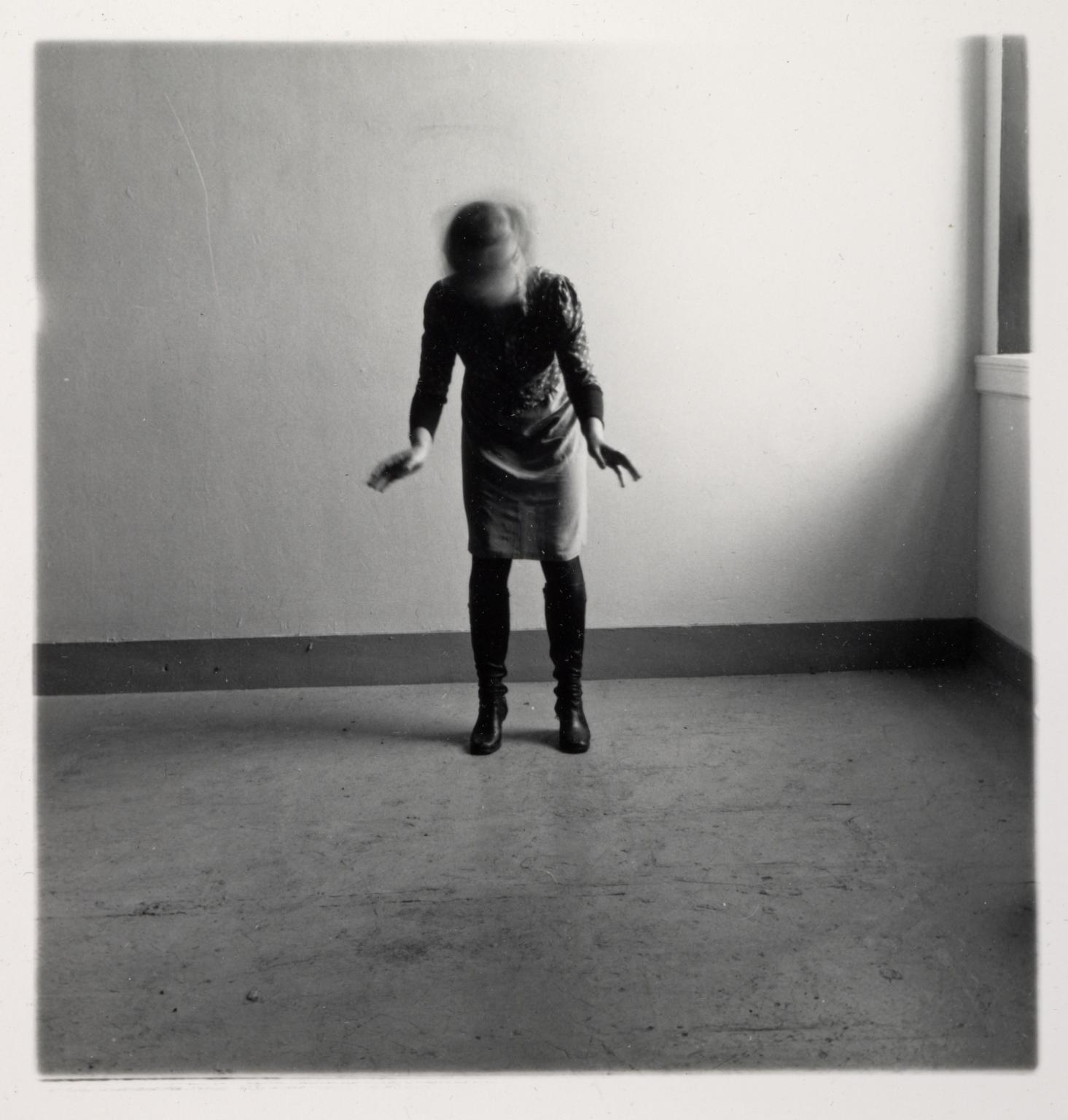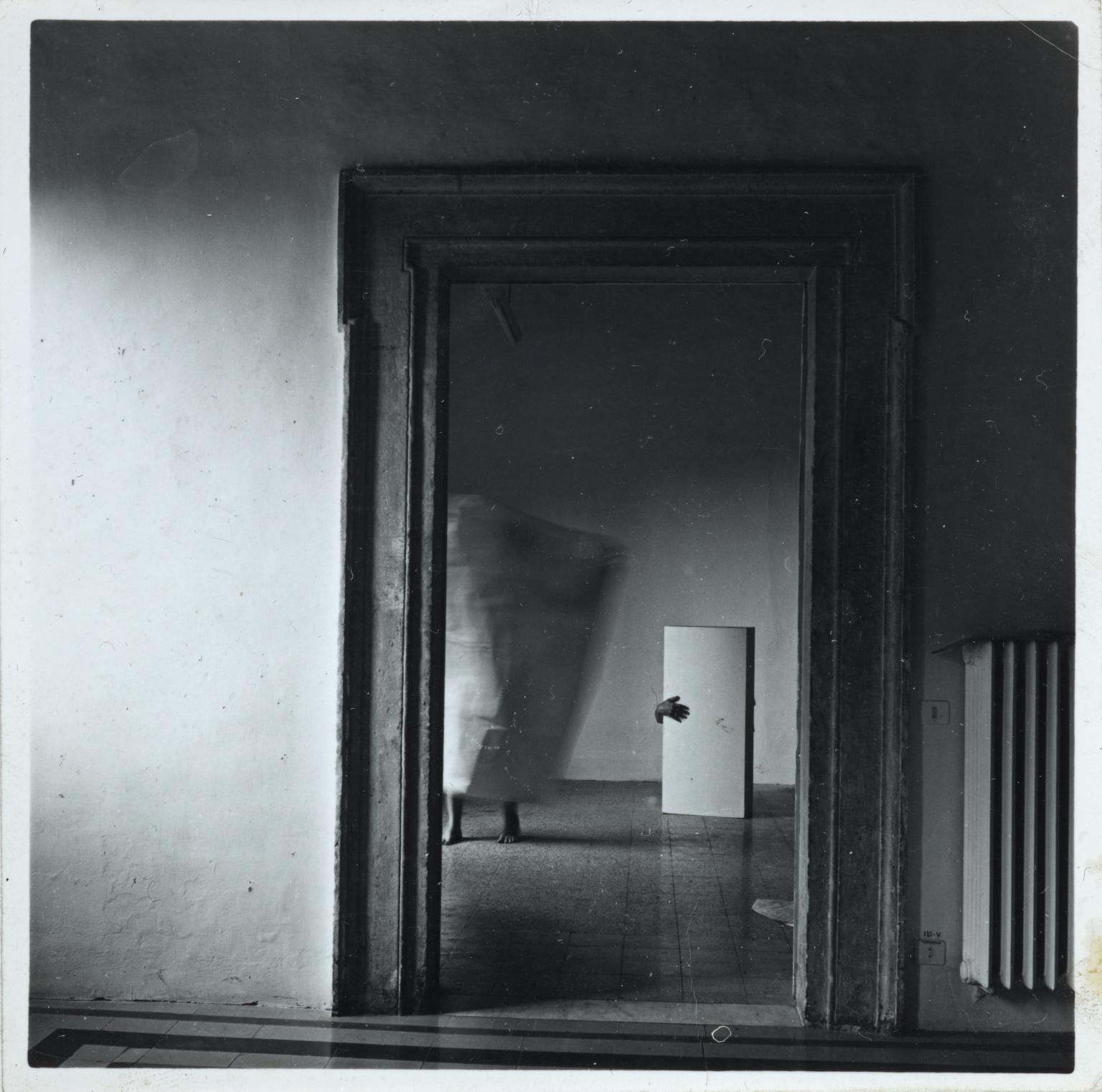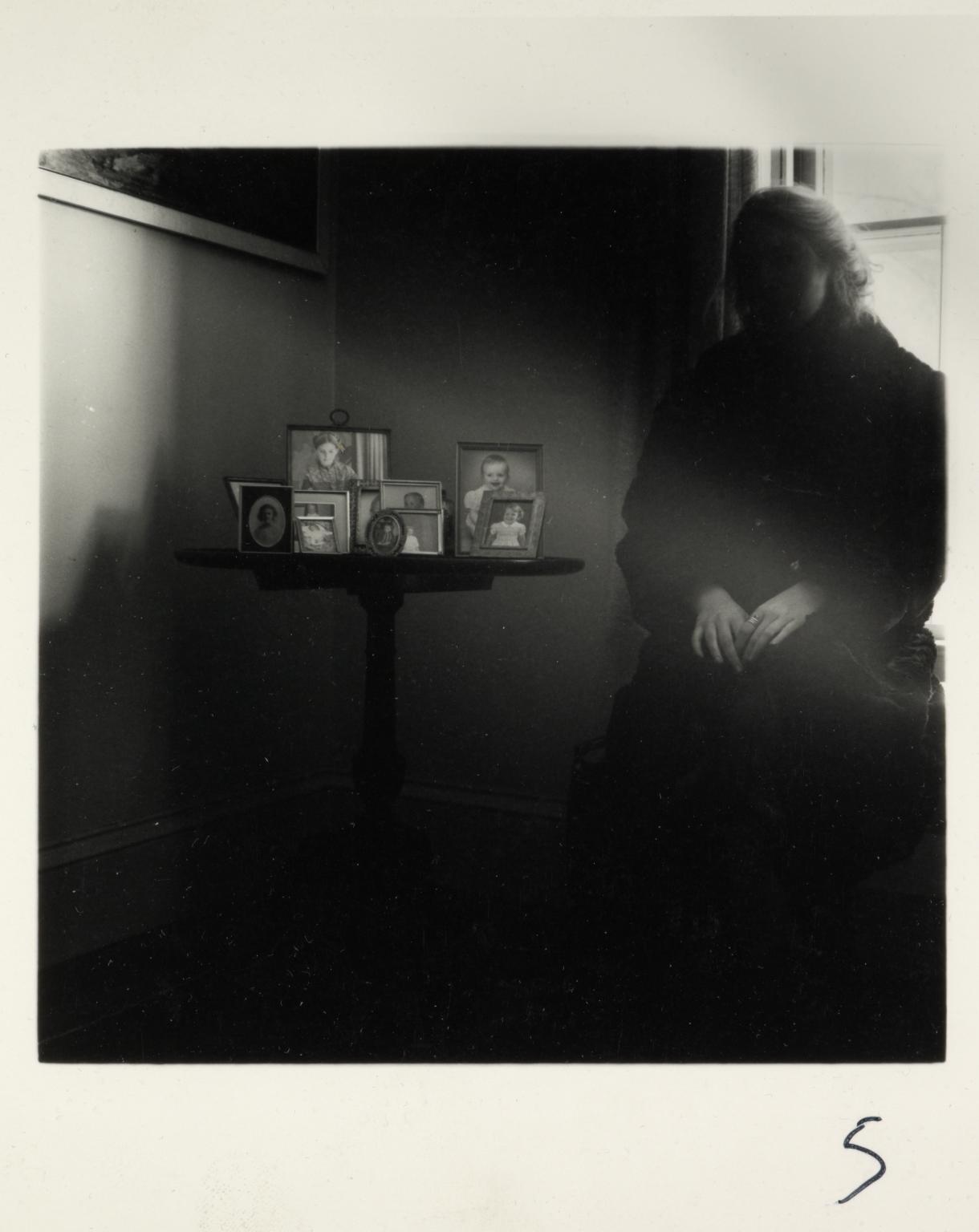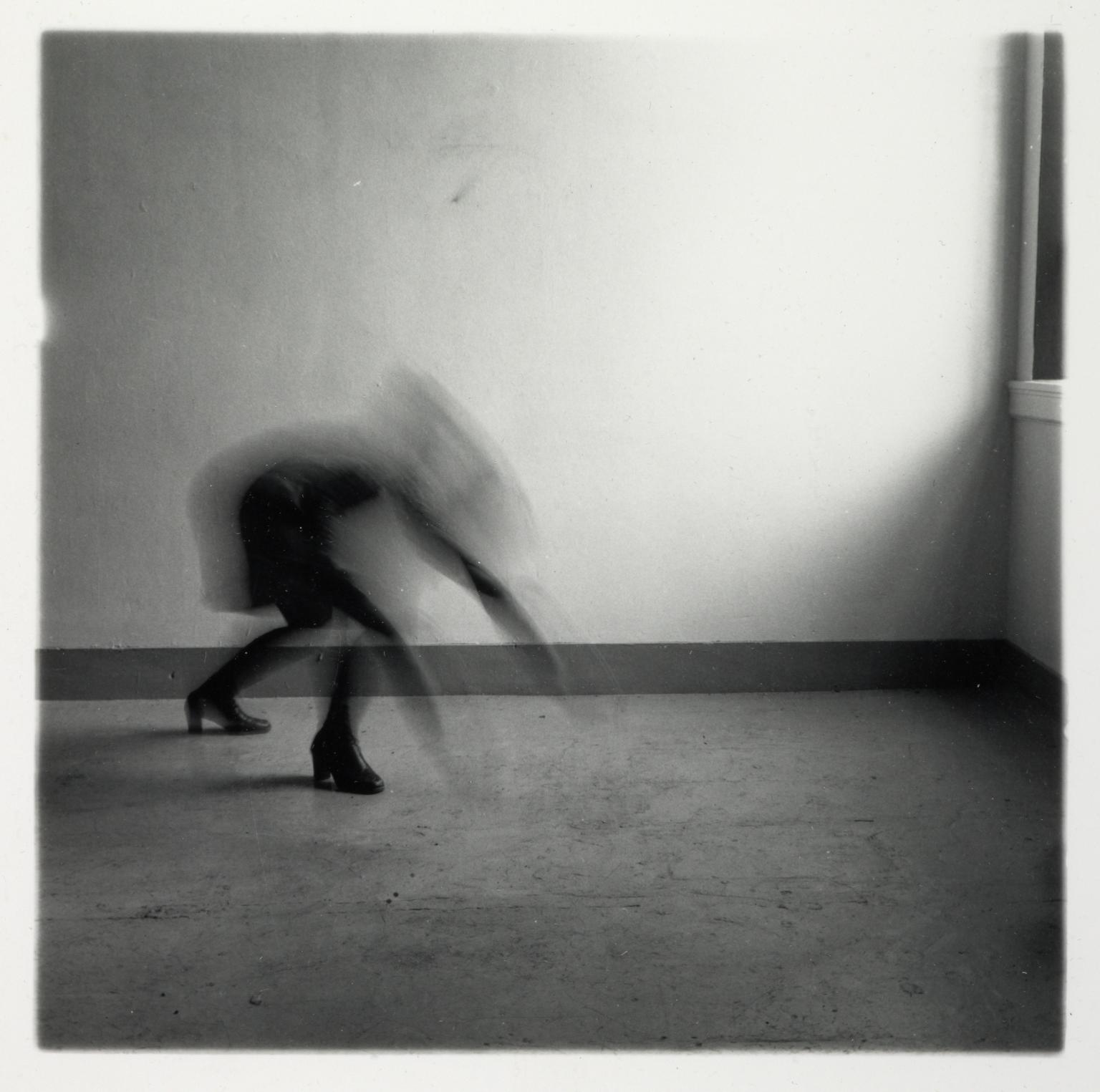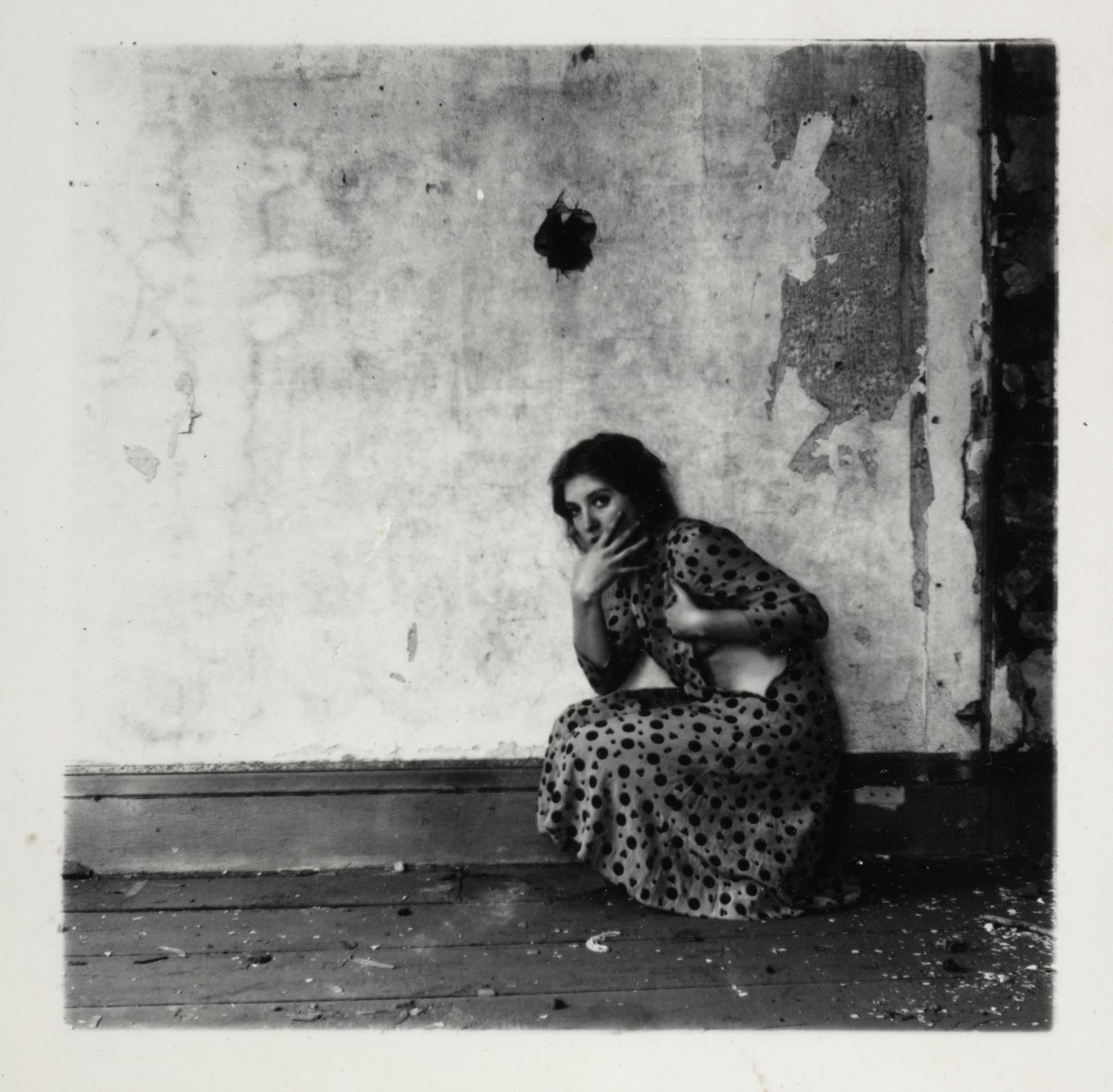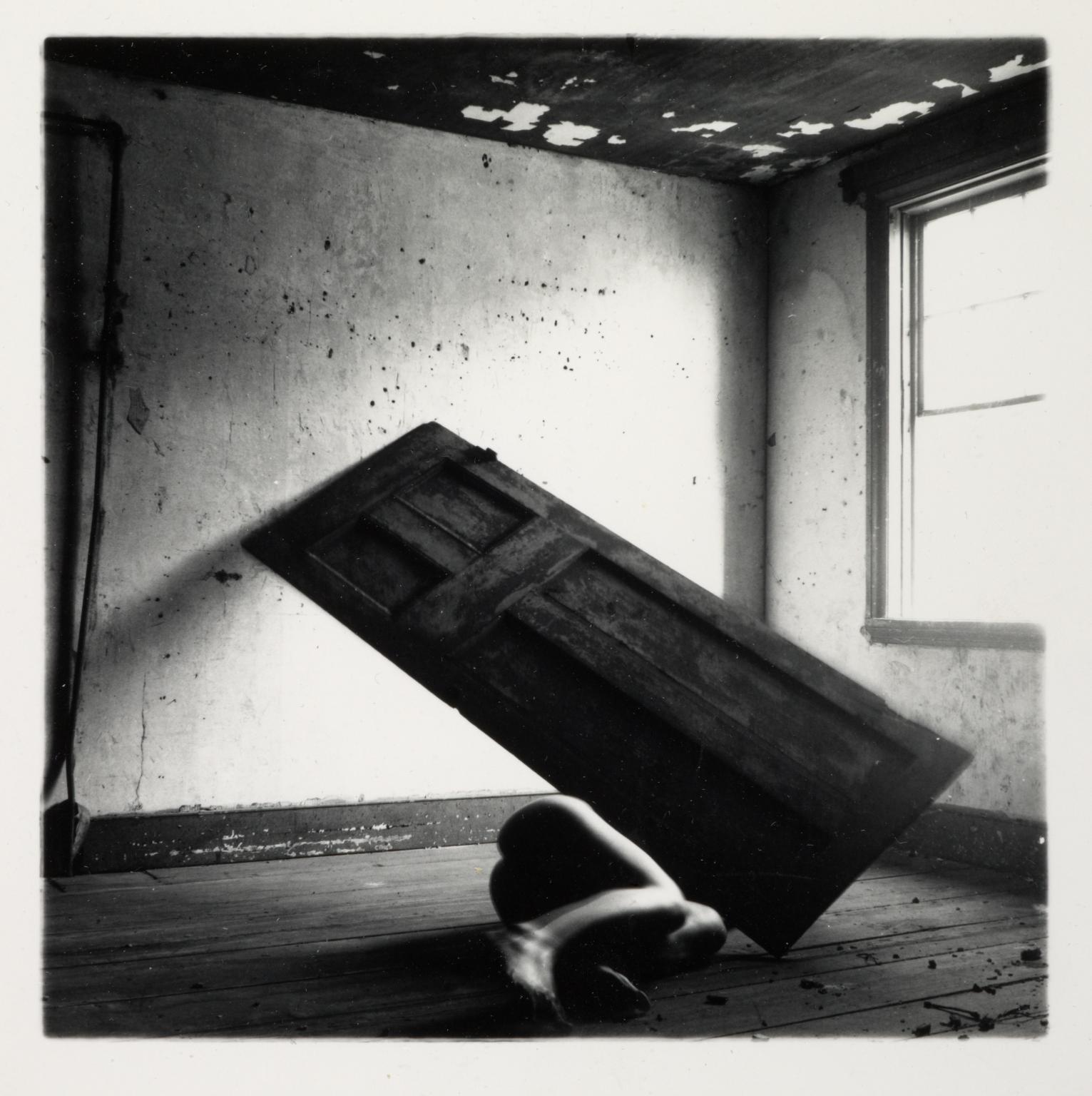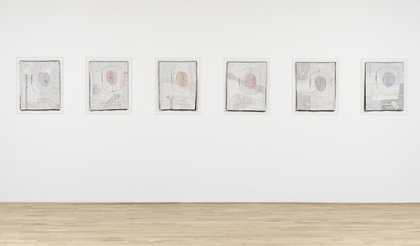This display brings together the space of the studio and the process of drawing, both of which functioned for Geta Brătescu at the threshold between the inner mental world of the artist and the world outside
Brătescu developed a conceptual artistic practice in Romania during a period of political unrest and censorship following the Second World War. She placed drawing at its core, exploring the process both as a method and as a conceptual device for her works in other mediums, from film and collage to performance and installation. For Brătescu, her sewn works were ‘drawing on textile with a sewing machine’. She imagined the process as bringing to life the mental world of the artist: ‘drawing connects the actual space with the abstract one. Everything we do, we decrypt and encrypt through drawing’. Brătescu worked as a book illustrator in parallel to her own art practice. This fed her interest in mythological characters such as Medea, which reappear in many of her works.
Meanwhile, the artist’s studio, positioned at the threshold of public and private, became an exploratory space for Brătescu in the totalitarian political climate of post-war Romania. ‘The studio is myself’, the artist stated: an arena in which artistic exploration was also a way to experiment with multiple versions of the self. In Hands the space of the studio and the process of drawing come together to form a faceless portrait of the artist. Bratescu saw an intrinsic bond between the two: ‘the place where drawing rejoices in its force and absolute freedom, like the prayer in a church, is THE STUDIO’."
Tate Modern
Natalie Bell Building Level 2 East
Room 3
10 July 2023 – 12 January 2025
Art in this room
